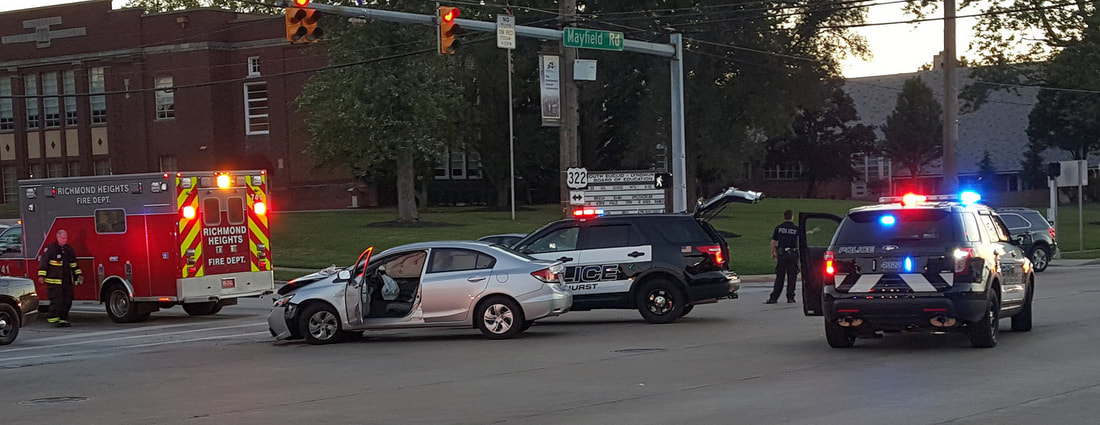Traffic Incident Management System (TIMS)
|
TIM consists of a planned and coordinated multi- disciplinary process to detect, respond to, and clear traffic incidents so that traffic flow may be restored as safely and quickly as possible.
Cost: $20.00
|
The National TIM Responder Training Program was created as part of SHRP2, which was authorized by Congress in 2005 to investigate the underlying causes of highway crashes and congestion in a short-term program of focused research. The TIM training program was designed to establish the foundation for and to promote consistent training of all responders to achieve the three objectives of the TIM National Unified Goal (NUG):
• Responder Safety • Safe, Quick Clearance • Prompt, Reliable, Interoperable Communications The National TIM Responder Training Program was developed and reviewed by professionals from all responder disciplines and those disciplines are the target audience for the training. |
Emergency Vehicle Operator Certification (EVOC)
|
This course is designed to present the necessary classroom experiences and competency course training, and includes testing in written form for both new and experienced emergency vehicle drivers.
Cost: $75.00
|
Many of the emergency response deaths result from excessive speed and unsafe driving, which can be related to the perception that the urgency of the mission justifies an elevated risk to the emergency responders and everyone else on the streets.
Participants in this course will have the opportunity to gain and/or verify a broad range of competencies associated with emergency vehicle driving. These competencies include basic understanding of emergency vehicle operations as well as the skills necessary for practical application. |
ATV/UTV Safety
|
This safety program was developed to provide training for ESOs who use UTVs and ATVs. Important topics addressed include: safe vehicle operations and vehicle operator information, details on the need for refresher training, recommendations on protective gear, pre-planning, basic safety and vehicle and skill maintenance.
Cost: $50.00
|
Utility Terrain Vehicles (UTVs) and All-Terrain Vehicles (ATVs) are becoming increasingly used by both fire service and emergency medical service (EMS) personnel. The vehicles help responders to act more quickly and save critical energy during emergencies. Not only do UTVs and ATVs assist the EMS providers and firefighters who use them, but they can also benefit the individuals being serviced.
|
EMS Trailer Operations and Safety
|
This program was developed by VFIS to teach the emergency vehicle operator the proper techniques and procedures for towing a trailer.
Cost: $75.00
|
As a result of many EMS operational changes, equipment that was never considered is now being moved with increasing frequency. Often this equipment is needed, but cannot be carried on traditional vehicles. To meet these demands, EMS organizations are purchasing trailers to transport equipment. Trailers can solve these organizational issues, yet many departments lack the expertise or training to hook up and move a trailer.
|
PASS Certification Program
|
AbilityWeb. (n.d.). Commercial Wheelchair Vans: Superior Van & Mobility. Retrieved from https://www.superiorvan.com/commercial/wheelchair-vans.
Cost: $100.00
|
The Passenger Assistance Safety and Sensitivity Certification Program is designed to ensure that community transportation drivers have current expertise in passenger assistance techniques and sensitivity skills appropriate for serving persons with disabilities. This course is compliant with the Community Transportation Association of America (CTAA’s) standards.
|
Bloodborne Pathogens:
|
The ASHI Bloodborne Pathogens training program is in-
tended for individuals who are trained as a CPR and/or first aid provider, or have an identified job classification in which there are tasks or procedures that increase the risk of exposure to bloodborne pathogens. Cost: $20.00
|
The goal of this training program is to provide knowledge
to employees with an identified risk on how to avoid ex- posure to blood and other potentially infectious materi- als, and what steps will be taken if an exposure occurs. |
Mission Statement:
To effectively and professionally provide quality educational experiences for students to meet the needs of the communities we serve.
Goal:
To fulfill our mission, the administration, faculty, and staff are committed to and focused on fostering the educational endeavors of our students through adherence to our core values in our daily work: Integrity, Compassion, Accountability, Respect, Empathy
To effectively and professionally provide quality educational experiences for students to meet the needs of the communities we serve.
Goal:
To fulfill our mission, the administration, faculty, and staff are committed to and focused on fostering the educational endeavors of our students through adherence to our core values in our daily work: Integrity, Compassion, Accountability, Respect, Empathy
oFFICE Hours
M-F: 9am - 5pm
|
Telephone304-716-0129 ext. 602
|
Email OUR EDUCATION DIRECTOR
|
701 Stafford Drive Princeton, WV 24740







